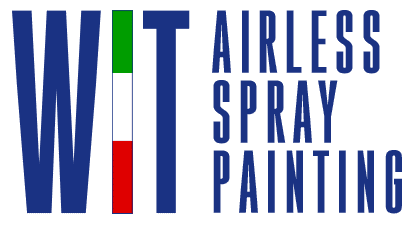Airless injection of two-component resins is a method used to repair cracks, fissures or injuries in structures, using an Airless pump to inject a mixture of two-component resins directly into the damaged area. The choice of repairing various types of damage by airless injection of two-component resins has been a widely used method in recent years, thanks also to their ability to solve different types of building problems. This process makes it possible to reinforce and restore structural integrity, or to create an impermeable barrier against water infiltration using waterproofing resin injections.

Two-component resins: repair steps
This is how the process of injecting two-component resins with an airless pump works:
Preparing the damaged area: Before starting, make a thorough assessment of the damaged area. Clean the surface and remove any debris, dirt or residue that could compromise the adhesion of the resin coating.
Preparation of two-component resins Two-component resin consists of two separate components, usually a resin and a hardener. Follow the manufacturer’s instructions for the correct mixing of the two components, by weight and/or volume. It is essential that the two components are mixed so that they bind together, so it is necessary to follow the dosages correctly.
- Two-component resins often have a 1:1 mixing ratio, in which case the following airless pumps are recommended:
- HYDRA TURBO BI-MIX
- HYDRA TURBO 44000 BI-MIX
- HYDRA MAX 3 (with third wash pump)
- Other times, however, the two-component resin has a variable mixing ratio (1:2, 1:3…1/10, etc.), in which case the new airless pump is ideal:
- HYDRA TURBO TWIN (independently pumped)
Preparing the Airless pump: Check that the Airless pump is clean and functioning properly. Make sure you choose a pump that meets the correct component mixing ratio recommended by the manufacturer. Set the appropriate pressure and settings on the airless pump according to the manufacturer’s recommendations.
Identification of injection points: Determine the strategic points where the two-component resin should be injected into the damaged area. These injection points may be holes or punctures made in the surface or adjacent parts, depending on the type and severity of the damage.
Injecting two-component resins: Using an injection gun connected to the airless pump, insert the tip of the gun into the injection points and start injecting the resin. Check the resin flow carefully to ensure that it is spreading and filling the cracks or crevices. Proceed slowly and smoothly, carefully monitoring the progress of the process.
Curing and solidification time: After completing the injection of the resins, allow the material to cure and solidify according to the manufacturer’s instructions. This may take some time, during which it is important to protect the treated area from disturbances or movements that could compromise the healing process.
Airless pumps for injecting two-component resins
Airless injection of two-component resins requires correct resin preparation, the use of a suitable Airless pump and knowledge of strategic injection points. Be sure to carefully follow the instructions of the resin manufacturer, the airless pump and the entire injection process for safe and effective results.
Discover our wide selection of airless pumps compatible with the injection of two-component waterproofing resins, you will find plenty of solutions for every need. If you require more information on our two-component resin injection product catalogue, please do not hesitate to contact our customer service!
